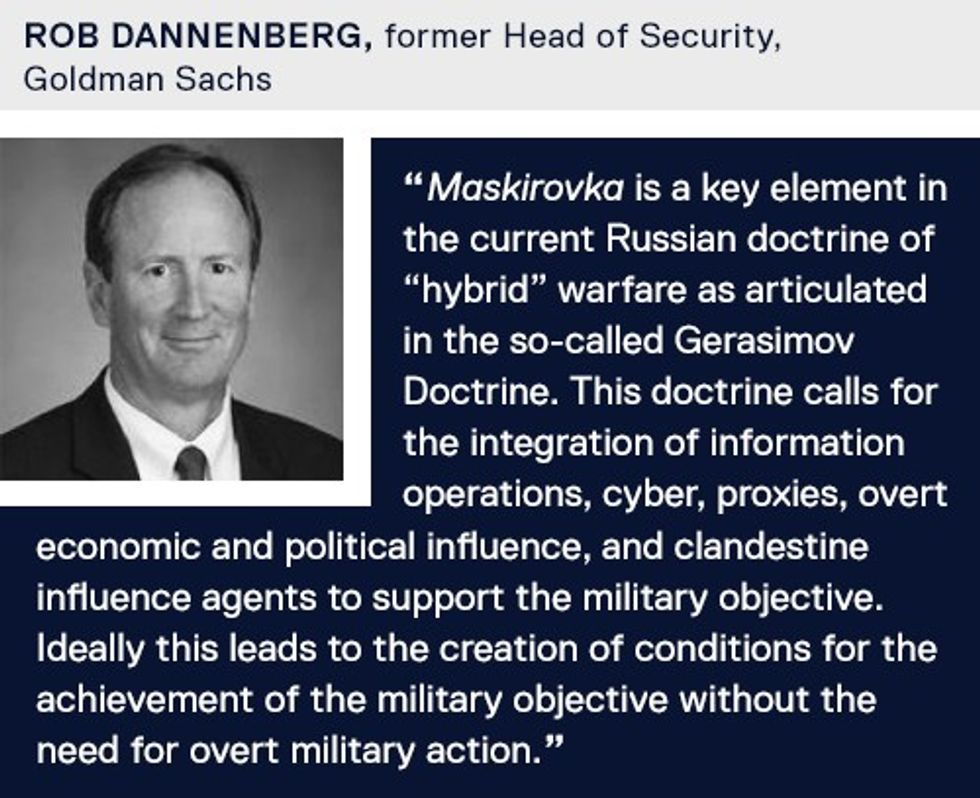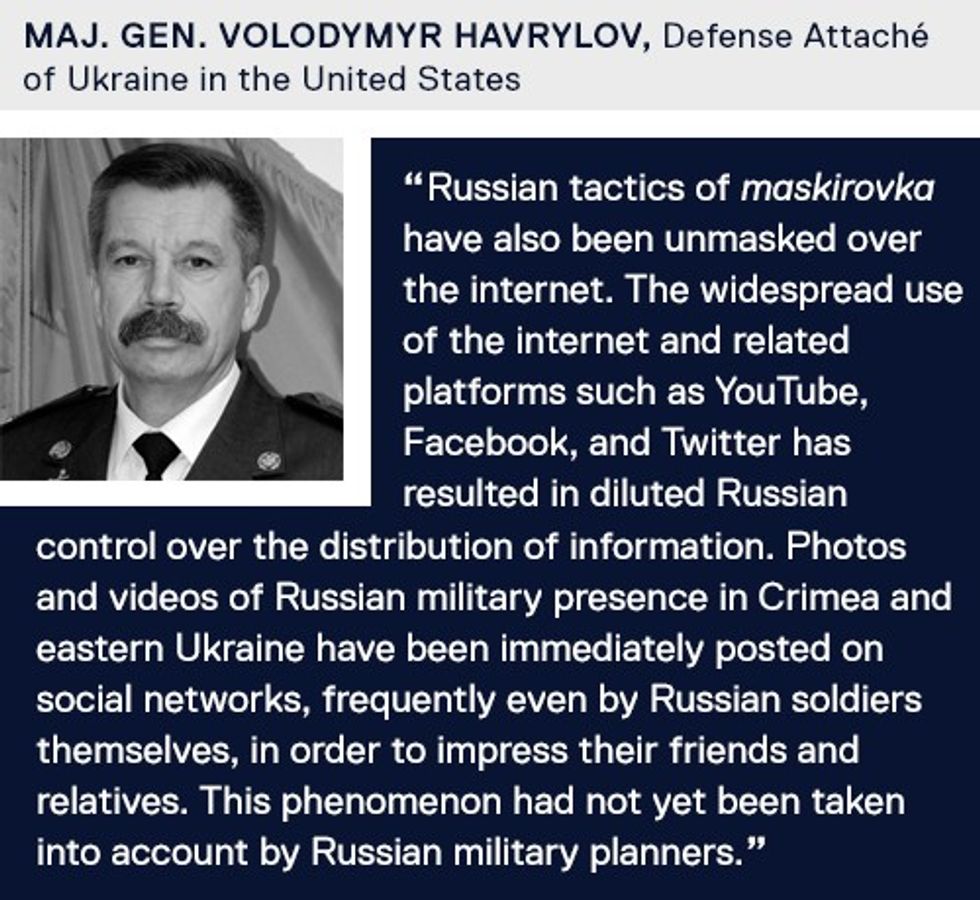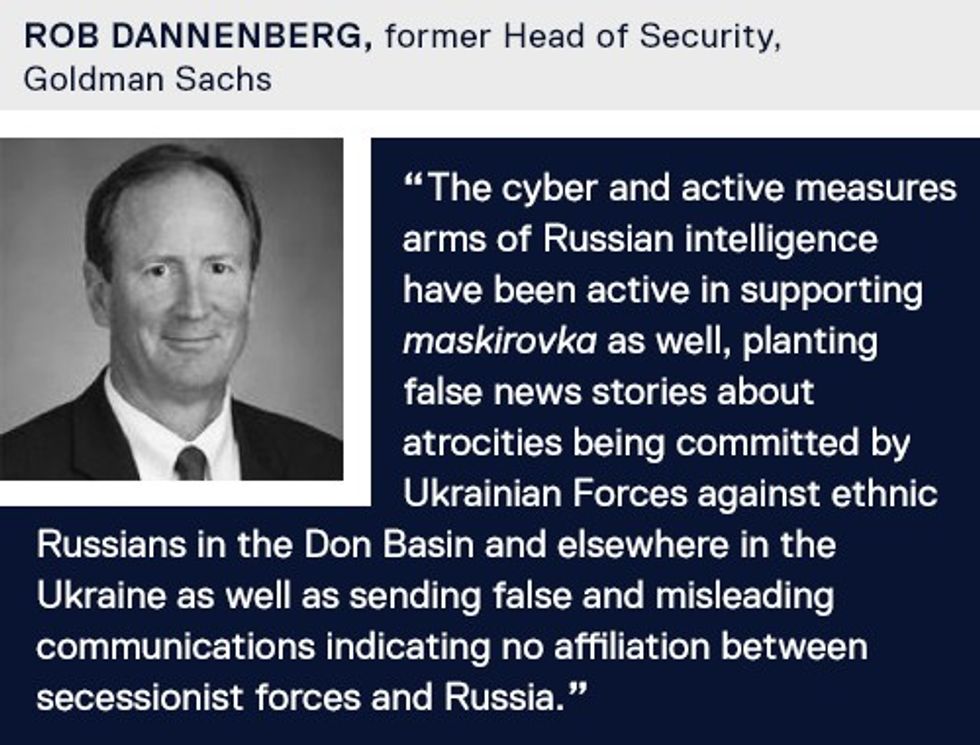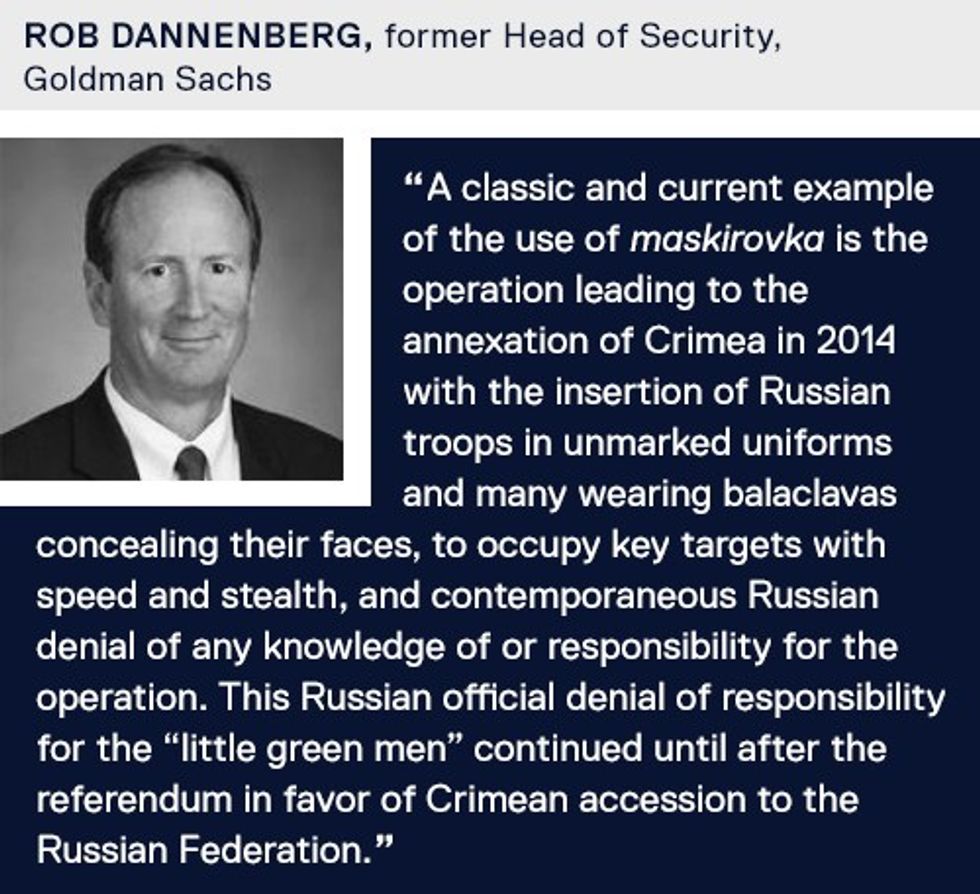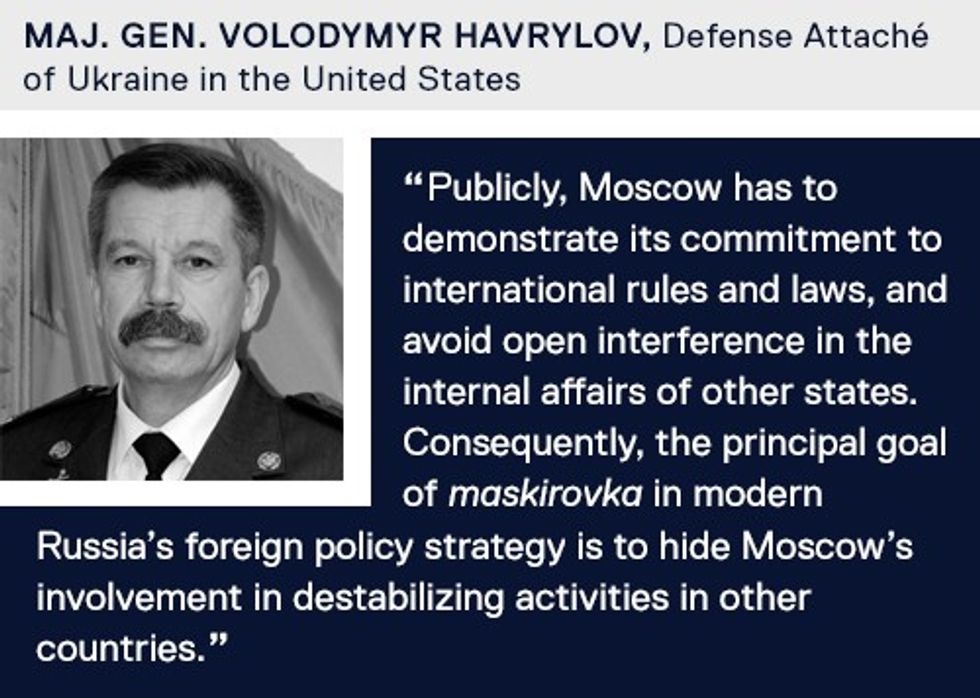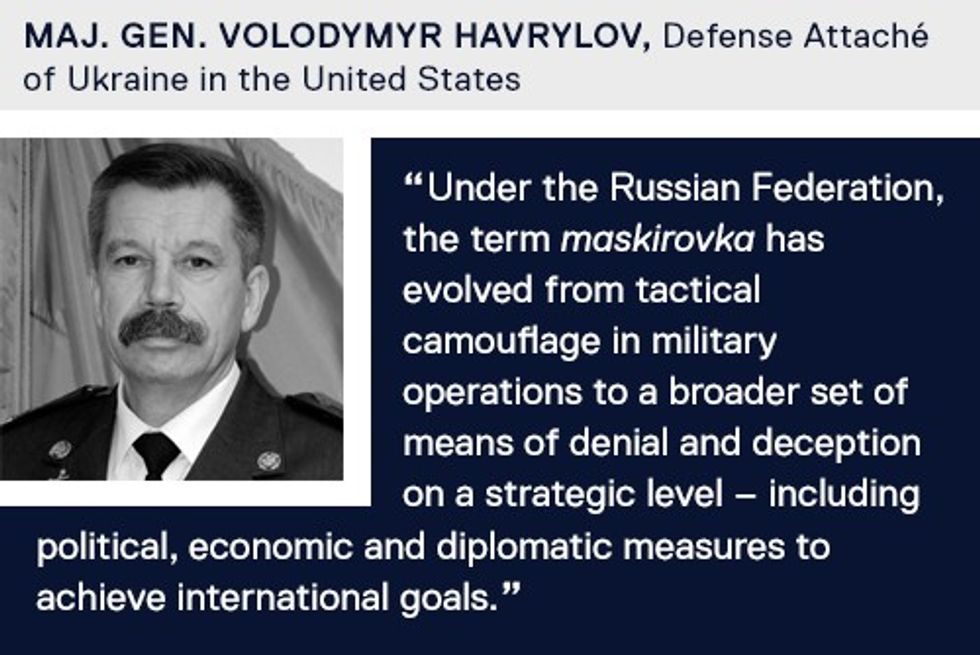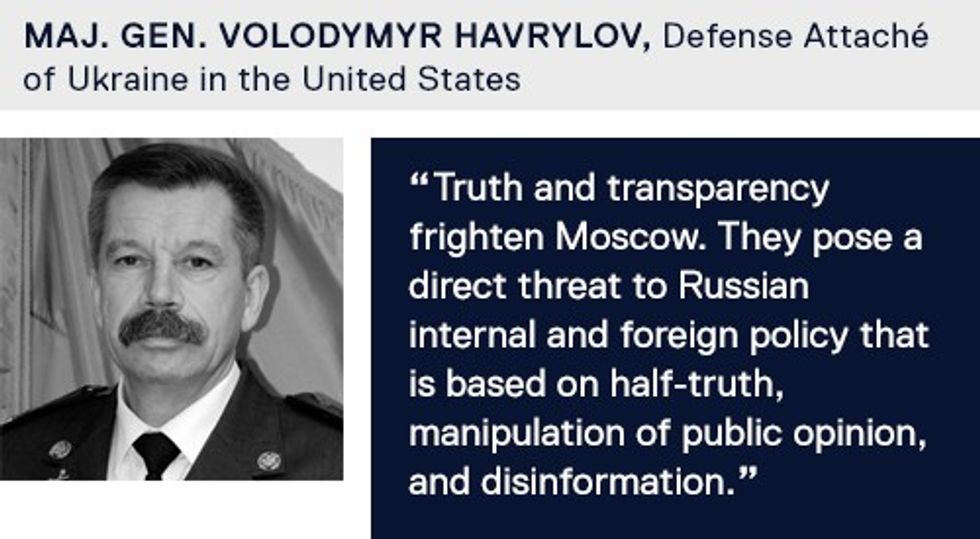While all militaries seek to lead enemies astray, Russia’s military doctrine of deception – known as maskirovka, Russian for “masking” or “camouflage” – is a foundational component of the Russian military and intelligence mindset. With maskirovka, the fog of war is not merely the natural byproduct of combat, but a deliberately manufactured feature of military operations intended to increase ambiguity and indecision in opposing forces. Using decoys, clandestine actions and disinformation, maskirovka facilitates military resilience, surprise action and increases doubt in an adversary while concealing Russian weaknesses.
- The tools of maskirovka broadly include psychological operations, manipulation of media, disinformation and propaganda, electronic and cyber warfare, irregular forces not in uniform, private military contractors, proxies and physical deception through camouflaged military maneuver.
- While not necessarily a new doctrine of warfare, maskirovka in its modern iteration takes place at the seams of conventional conflict – the gray zone between peace and war.
Russia’s use of deception in battle goes back centuries, but modern technologies act as a force multiplier, making it more complex and harder to counter. The confluence of old school Russian maskirovka and digital technology primarily seeks to infect an adversary’s decision cycle with constant doubt – hindering timely or well-informed action.
- Old-school tactics include: decoys such as dummy tanks as used by the Serbian military during the NATO air campaign in Kosovo in 1999; confusing demonstrations of capability, such as the Zapad wargame; occasional “buzzing” of U.S. naval vessels or near contested borders to determine response protocols; deployment of “patriotic” or “volunteer” unconventional forces, such as the “little green men” deployed to annex Crimea in 2014; the clandestine delivery of military supplies camouflaged as humanitarian convoys to support proxy and clandestine forces; incessant denial of military presence or disingenuous narratives behind military operations, such as acting as peacekeeping force to protect ethnic and expatriate Russians.
- Offensive cyber and electronic warfare capabilities allow Russia to insert doubt into their enemy’s faith in digital systems. Fake command and control facilities emit fake radio frequency signals to deceive enemy intelligence assets, while manipulating or jamming radio frequency or GPS signals could undermine a military commander’s faith in the accuracy of precision-guided munitions.
- With modern communications technology, automated bots on social media platforms amplify targeted disinformation to both divide populations and entice susceptible groups to favor Russian-produced narratives. State-sponsored media – such as RT and Sputnik – can guide the conversation and help legitimize Kremlin propaganda.
At the same time, modern communications technology is also a great vulnerability for Russian use of maskirovka. Open source platforms can be used to discredit the Kremlin’s disinformation, potentially causing unforeseen political backlash. However, successfully countering the narrative requires swift and agile reaction.
Maskirovka creates uncertainty and plausible deniability regarding Russian responsibility for operations, dulling the West’s response. This has helped the Kremlin sidestep international norms without meaningful repercussions.
- Because Russian “patriotic hackers” executed the electronic denial of service attacks against Estonia – a NATO member – in 2007, Russia maintained plausible deniability, complicating Estonia and its allies’ ability to retaliate.
- The disinformation campaign and troop buildup near South Ossetia ahead of the 2008 invasion of Georgia (and repeated before the 2014 annexation of Crimea) allegedly involved Russian special operations forces with no insignia clearly identifying them as Russian military, later dubbed “little green men.”
Maskirovka often goes beyond fostering doubt and presents an alternative – and often false – narrative. Russia has used this to pursue geostrategic objectives under the guise of international cooperation. Perhaps the most prominent example is Russia’s positioning itself as a counterterrorism partner in Syria – and Libya to a lesser extent – as it seeks to extend its global influence to the Middle East.
Russia’s high-profile air campaign over Syria provides a convenient distraction from its military operations in Ukraine – and clandestine ground forces in Syria.
- It also allows Russia to present itself to the world – seemingly convincingly to U.S. President Donald Trump – as a strategic ally to the international community in the war against ISIS, a potential foundation for the alleviation of sanctions initially imposed on Moscow for its annexation of Crimea.
- But while Russia may occasionally target ISIS in Syria, its primary objectives in the country have been to bolster the Assad regime and destroy the Western-backed opposition so that it does not create a pro-U.S. entity in Syria.
- “In 2015, Russia began a military intervention in Syria claiming it was waging war on ISIS and international terrorism,” Ted Poe (R-TX), said at a House Foreign Affairs subcommittee hearing on “Russia: Counterterrorism Partner or Fanning the Flames?” yesterday. “To some, this was welcome news. It seemed that there may be a rare moment that the cooperation between the former Cold War foes – Moscow and Washington—would be able to work together to combat terrorism. This was fantasy.”
The Russian Embassy did not respond to a request for comment.
Levi Maxey is a cyber and technology analyst at The Cipher Brief. Follow him on Twitter @lemax13.



